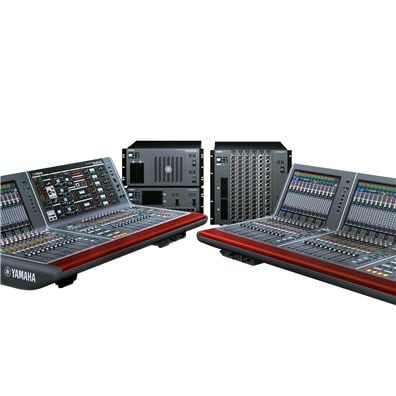Yamaha RIVAGE PM10 at the Daejeon Arts Center
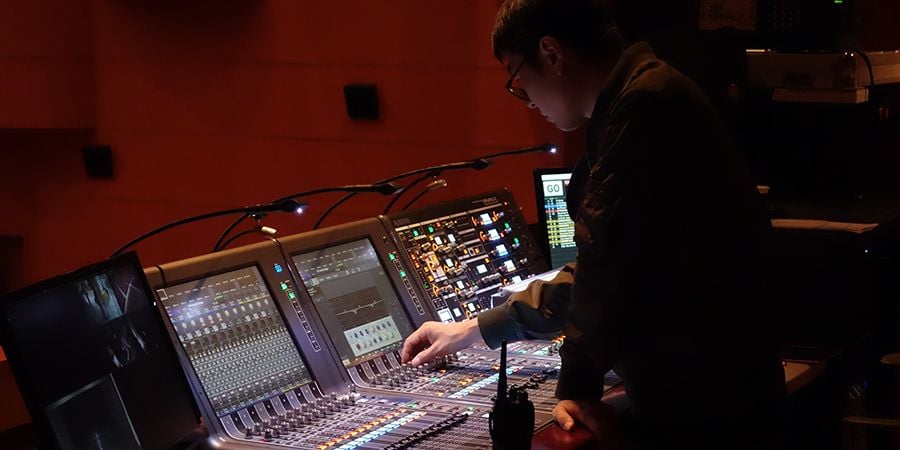
The Yamaha RIVAGE PM10 system was introduced for the first time ever in Korea at the Daejeon Arts centre in Daejeon in July 2016. We asked Mr. Sung, Jae-hoon (Sound Director/Team Leader) and Mr. Park, Chan-ho (chief Sound Engineer) for their assessment of the system thus far.
Daejeon Arts Center
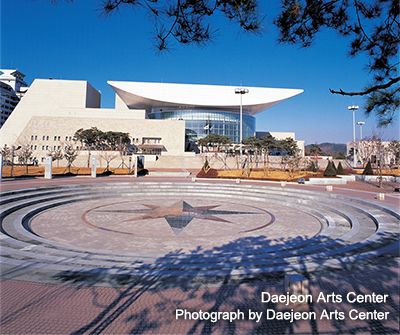
Daejeon is known primarily as a science and technological engineering hub, but also has a vibrant art community with the Daejeon Arts Center playing host for numerous concert, theatrical, and cultural events and activities. The multi-purpose public hall’s advanced facilities and activities has been a big influence on other halls in the region.
PM10 System
Two PM10 consoles were installed in the Art Hall (main hall) one for FOH and one for recording in the control room. Both systems are connected by a network so they can share audio input and output signals.
PM10 Selection
The Daejeon Arts Center has long used analog mixers but recently decided to switch to a digital mixing set up. The top considerations for selecting the right console were reliability, high-quality sound, and intuitive, flexible operation. After conducting extensive research on the top models of the digital mixer market and even trial runs using some models for concerts, theatrical events or recording sessions, they ultimately decided on the Yamaha PM10.
Results of PM10 introduction
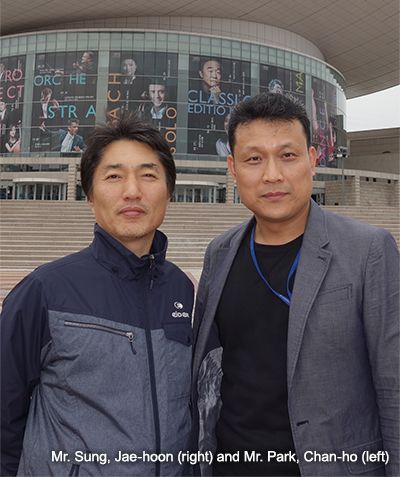
Everyone at the Art Center is very pleased with the PM10’s performance and impressed by the sound, reliability and flexibility of the system. The console's expandability, fast and easy operation, and intuitive interface have improved, and sped up system management, configuration, and operation substantially. This has earned the PM10 a very positive reputation among visiting audio engineers who have used it for performances at the hall, and are subsequently recommending the PM10 to sound professionals at other venues.
With the latest PM10 it was now possible to control and manage multichannel audio signals and processing simultaneously, while easily recalling scenes— a significant improvement on traditional analog workflows, thus making it clear that the Art Center’s switch to digital technology was the right choice.
Assessment of PM10 system
Reliability
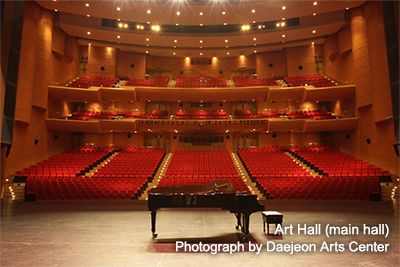
The most important consideration during the console selection process was system reliability. Through their extensive research, they knew Yamaha mixers have earned a reputation among hall audio engineers in Korea as being extremely reliable and this influenced the final decision greatly. The team at the Arts Center has reported no problems thus far and is particularly satisfied with the stability of the “Ring” network configuration. In the future there are plans to add a “Mirroring” mode for even more reliability.
Sound quality
The team has been consistently impressed with the quality and clarity of the audio— especially the VCM modeled Rupert Neve SILK processor on the hybrid microphone preamplifier which gives console operators more expressive capability for vocal or instrument sounds by selecting either the “BLUE” or “RED” mode. Channel EQ’s can be mixed more precisely, aggressively, or softly using optimized presets that add a distinctive edge to individual sounds, while onboard VCM Comp and EQ plugin effects such as the Rupert Neve 773, 754, 810, or 830 further expand the breadth of unique tone-shaping possibilities. The PM10 also has a comprehensive range of onboard effects featuring Yamaha originals and modeled TC Electronics versions etc. that can add depth, atmosphere, and texture for a more professional sound. These kinds of features were not available to them with the previous analog console setup so naturally. Everyone was extremely impressed with the capabilities of the PM10 and excited about the addition of more plugins for even more unique and flexible sound-shaping possibilities.
Analog Sensibility
The Rupert Neve SILK processor that we mentioned before provides better mid-to low frequencies and clearer, sharper highs with a wider dynamic range, so it’s almost indistinguishable from natural analog sound. This is further accentuated by the wood panel on the console itself, adding a warm natural aesthetic to complement the analog tone of the console.
Operation
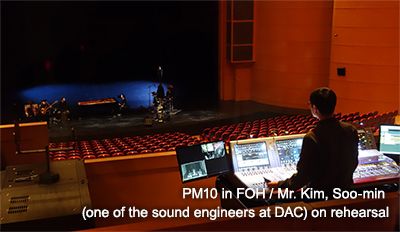
To operate a mixing console at a professional level, it is usually necessary to have a maestro’s level of proficiency and familiarity with the mixer, but the PM10 has a much shorter learning curve due to its user-friendly, intuitive interface, making it easier for the operators at the Arts Center to familiarize themselves with the console’s operation and flexible functionality.
Centralogic / Bay
At first, everyone was unaccustomed to the Centralogic function but is now getting used to it. Centralogic is a basic function of Yamaha’s higher-end mixers that allows users to control all the console’s EQ, Comp, dynamics, mix levels etc. using 12 encoders conveniently located in the center of the console. You also have extremely useful Bay function on PM10. You can divide the console into 3 sections as Bay, and can mix separately on each Bay. So for example, when you operate by yourself, you can assign monitor mixing, house mixing, and recording to different BAYs. Two engineers can also mix at the same time using the same PM10 for instruments and vocals on individual Bay.
Display
The display’s position is a good distance for operation while sitting down, and the size is ideal for clear viewing and at a perfect height and angle for an unobstructed view of the stage. Most importantly, the PM10’s display design allows you to monitor signal flow of the console at one glance. You can easily check EQ, dynamics, routing, and channel levels using the Touch and Turn function for fast and easy operation via the touchscreen. Audio engineers at the Arts Center were also impressed with the pressure sensitive touch panel as opposed to the usual capacity-type operation. Mis-operation or mistakes from lightly brushing the display are a thing of the past now, and users can even use gloves if they choose.
Physical Controllers
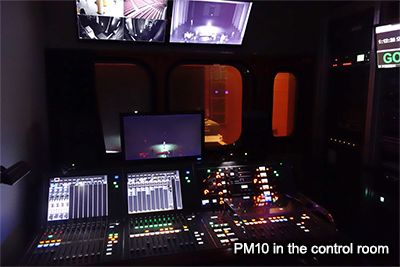
Another significant point worth mentioning is the ease with which individual operators can express their own personal touch or sensibility with this console. The colour and shape, position, brightness etc. of the channel strip can influence a user’s mixing technique considerably, and with PM10 you can easily check channel volume and parameters at once glance. Channel EQ, dynamics, Aux, matrix, and other parameter control are very easy to monitor visually because of the intuitive console layout design, so first-time users can get accustomed to it after only one or two sessions. The colour and brightness of the channel strip can be adjusted to suit preference. And the unique horseshoe-shaped LED lights around the knobs are particularly good for high visibility. Every knob shares this distinctive LED layout design so engineers don’t have to stand up to operate the console. Knob and fader operation is also really smooth and more detailed compared to PM1D and PM5D models. So these updates are refreshing because they really take the console operator’s technique and performance into consideration.
Dedicated keys
The PM10 offers very smooth operation with convenient function-related keys such as [ISOLATE], [RCL SAFE], and TO ST [A]/[B]. For example when you want to recall a scene you can use [ISOLATE] or [RCL SAFE] in a variety of ways. This is useful when you are doing various sessions for different artists and need to smoothly transition between acts. When performers need to change very quickly, the [ISOLATE] key is particularly useful.
Sends on Fader / DCA
The Sends on Fader function is very useful for monitor mixing. By assigning values to the individual faders, operators don’t have to adjust Aux and metric levels via other knobs. This makes it very easy to understand the monitor balance of each instrument at one glance, and adjust accordingly. The 24 grouping DCA has a higher capacity so, for more detailed mixing, there is a Rollout function with which you can expand all channels assigned to a DCA to other Bays and control them individually.
Because the PM10 can be configured using the unique TWINLANe high-quality network protocol, or the versatile Dante network protocol, we are considering configuring various networks using Dante for more high performance systems in future
Related Products
Location
Daejeon, South Korea

